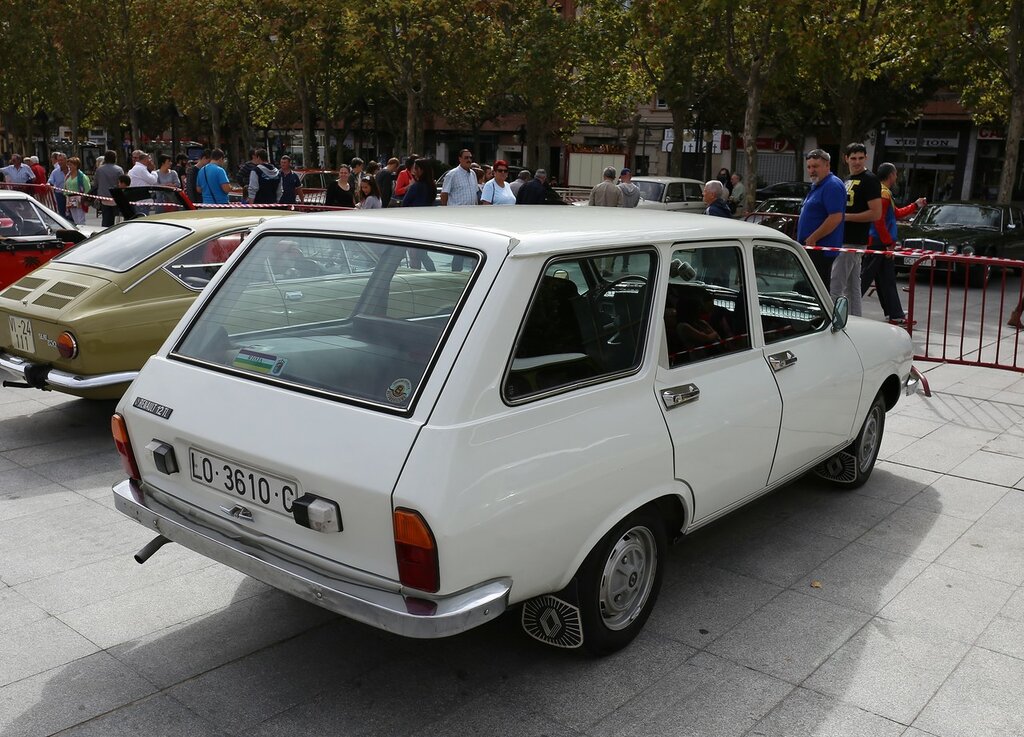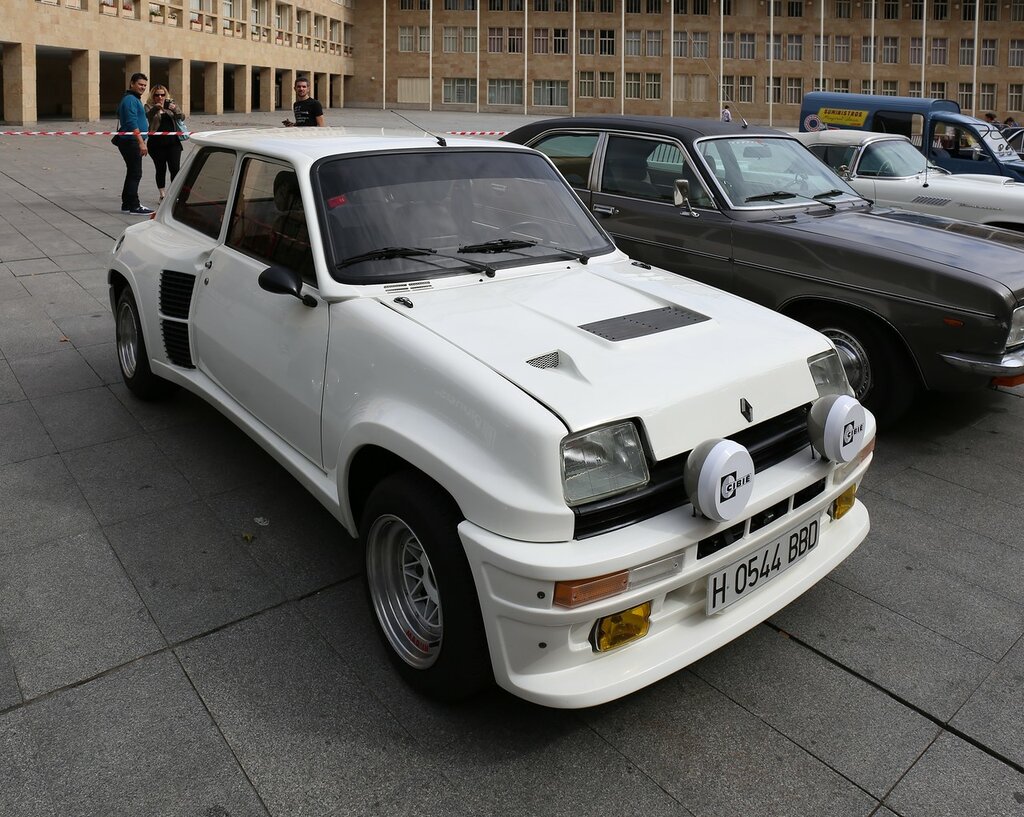French Cars on Oldtimer Parade in Logroño
In 1934, Henri-théodore Pigozzi founded the Societe Industrielle de Mechanique et Carrosserie Automobile (SIMCA). The company was founded on the basis of the Assembly production of Fiat cars, which the entrepreneur organized back in 1928. After 3 years, the first car of the new brand was released. The Simca 8 was first introduced at the Paris motor Show in October 1937, and sales in France began a month later. The car was essentially a French version of the Fiat 508C "Nuova Balilla".

For
promotional purposes, a non-stop rally along the route of 50,000
kilometers was organized, where the car showed an average speed of 115.1
km/h with a fuel consumption of 7.9 liters per 100 km on the high-speed
section (10000km) and 54 km / h with a consumption of 6.5 liters in the
urban cycle (20000 km). On rural roads (20,000 km), the car showed an average speed of 65 km/h with a fuel consumption of 6.5 liters. As
a result of the run, 8 world records were actually set, but they were
not registered, since the purpose of the run was purely advertising. The
car was produced in both two-door and four-door versions, and had a
six-cylinder engine with a capacity of 32 HP. which had an innovative
cylinder head made of aluminum alloy. Due to its compactness and economy, the car was so
popular that it was produced without any special improvements until
1951, production did not stop even during the war.

Simca of the Vedette family, produced from 1954 to 1961. The"
American " shape of the car is explained simply - this Ford development
was produced at the French branch of the concern, which was bought out
by the French company Simca along with the rights to produce this car. After that, the Ford Vedette became known as the Simca Vedette. The four-door mid-class sedan was equipped with V8 engines of 75 to 84 HP with a three-speed manual transmission. One of the features of the body can be called a sunroof, which was very rare in Europe at that time.

During
the production period, the car was updated almost annually, changes
related to improving consumer qualities, but the appearance remained
almost unchanged. In 1959, the cars were equipped with an automatic transmission, which also had a completely manual mode. In the same year, Vedette began Assembly production in Brazil, which lasted until 1963.

In France, the output was more than 173 thousand cars, in Brazil more than 166 thousand. The vedette Chambord model (pictured), which was produced from 1957 to 1961, was presented at the exhibition.

Citroën 2CV - французский "народный"
автомобиль, пользовавшийся неизменной популярностью все годы выпуска.
Машина производилась во множестве модификаций с 1948 по 1990 год с общим
количеством более 8.7 миллионов штук. Популярность 2CV не
ограничивалась Францией, машина шла в огромных количествах на экспорт, а
во многих было налажено ее серийное производство - Бельгии, Португалии,
Испании, Великобритании, Аргентине, Уругвае, Чили,Югославии.

Интересна история появления этого
простого, недорогого и неприхотливого автомобиля - директор компании
Пьер-Жюль Буланже попал как-то в пробку во время одного из сельских
праздников, проезду мешала масса гужевого транспорта крестьян и мелких
торговцев. Буланже был удивлен тем, что не увидел не одного автомобиля,
принадлежащего фермерам и сельским ремесленникам. Озадачившись этим
вопросом, он организовал опрос в селькой местности и выяснил, что
крестьяне считают автомобиль слишком дорогим, сложным в эксплуатации и
тяжелым для сельских дорог.. Решив исправить это положение, Буланже инициировал разработку машины, способной удовлетворить запросы сельских жителей.

Первый прототип был создан ещё в 1937 году, однако до создания серийной модели пришлось изготовить более двух с половиной сотен вариантов, которые Буланже тестировал лично, бракуя за малейший недочёт. К 1939 году, путем проб и ошибок, был создан прототип, его планировали показать на осеннем Парижском Автосалоне, однако начало Второй мировой войны отсрочило серийный выпуск на 10 лет.
On September 22, 1949, sales began and demand exceeded all expectations - by the end of the year, the number of buyers was such that with the existing production plan, the car had to wait 6 years. In the first years of 2CV production, the distribution of cars was put under state control - 10% was received by farmers, rural doctors and social workers, 60% was exported, and ostapny was freely sold. All mosses were the same color - gray, only in 1960 the color scheme was slightly varied - some cars were covered with blue paint. The car became a hero of film comedies, as a symbol of the simpleton-razini, which only emphasized its "nationality". The first editions had an engine of only 9 horsepower, (the name 2CV stands for 2 chevaux vapeur - "two horsepower", which alludes to a steam-horse carriage), later the power was increased to 24 HP.
Renault R8, небольшой семейный автомобиль
с задним расположением двигателя был впервые представлен в 1962 году и
выпускался до 1973 года. C 1963 года машина комплектовалась
полуавтоматической коробкой передач оригинальной конструкции -
электромеханической.

Автомобиль выпускался в 1968-1971 Румынии под именем Dacia 1100, а так же в 1966-1970 годах в Болгарии как Bulgarrenault 8.

В 1969 году ему на смену пришел Renault
12, имевший уже переднее расположение двигателя. Машина быстра завоевала
симпатии публики в бюджетном сегменте стала самым продаваемым
французским автомобилем в мире.

Еще один Renault 12 с кузовом "универсал" появился на конвейере в 1975 году.

Так же, как и предующая модель, R12
производился в других странах, на этот раз их список значительно вырос -
машины производили еще и в Испании, Бельгии, Турции, Канаде, Австралии,
Аргентине, Колумбии, Мексике и Чили.

Renault 5 turbo - раллийная версия
популярного автомобиля класса "супермини". R5 был запущен в серию в 1972
году и производился во Франции, Испании, Венесуэле, Иране, Мексике и
Словении до 1985 года. В США машина производилась с 1976 по 1983 под
маркой Le Car.

Спорткар на базе R5 имеет двигатель
объемом 1.4 литра с турбонаддувом мощнстью 158 л.с., установленным
позади водителя, для чего была изменена задняя часть кузова. Всего было
изготовлено 3576 таких машин.

The company Alpine (Société Anonyme Des Automobiles
Alpine) was founded by the French racing driver Jean Roedelet in 1954
and is engaged in the production of sports cars based on Renault
aggregates.

The Alpine A110 was produced from 1961 to 1977
using the Renault 8 chassis, repeatedly understating the prizes in
international rallies.

The car has a fiberglass body and was equipped with engines from 90 to 140 HP

Well, here I will also put the only representative of the Swedish car industry. The
first mass-produced post-war model of the Scandinavian company was
produced for almost 20 years - from February 1947 to October 1965. The
company, known before the war for its prestige car models, turned to
this market segment due to post-war difficulties with materials and
fuel. In these conditions, small economical machines of the PV444 series were in good demand. The four-seat car had a 1.4-liter diesel engine with a power of 40 HP. A
total of 529.5 thousand units were produced, including for export, and
this car became the first Volvo model to be delivered to the United
States. The PV544 model (pictured), an upgraded version of the 444, featured a wider five-seat body, hence the number 5 in the index. The engine is also more powerful-60 HP, and in the PV544 Favorit and Special models-75 HP, Sport 90 HP.

